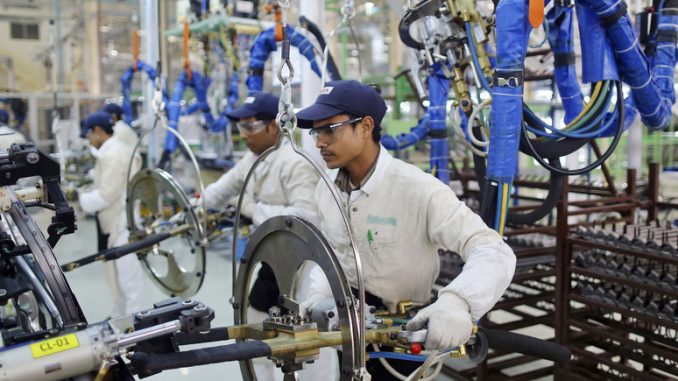
By Arun Maira
While the missing middle in India’s economic institutions is cramping enterprises struggling to scale up, the dwindling middle in political institutions is creating dangerous societal divisions
Youth with frustrated aspirations will become foot soldiers for political extremism, whether of left or right, as history has shown all over the world. Frustrated with the world, their energies can be sparked to burn, to lynch, to terrorize. They may join Naxalite armies or bands of gau rakshaks. Or, without political intentions, they may just disturb the peace in neighbourhoods. India’s troubles with its large population of youth are both economic—how to find them gainful employment—and social—how to keep them out of making trouble. When five innocent persons were lynched in a village in Maharashtra by a mob recently, the police were able to arrest 25 persons. All of them were either jobless or insecure daily wage earners. The same pattern has been found in most cases of senseless violence around the country: unemployed or underemployed young men.
Economic growth is not creating enough opportunities for decent work with sustainable sources of income for India’s burgeoning numbers of youth. India has among the lowest employment elasticities—the numbers of jobs generated with each unit of GDP (gross domestic product) growth—of all major economies. This problem was initially diagnosed as a lack of skills. The United Progressive Alliance government launched a massive drive to skill 500 million people. The National Democratic Alliance government followed through and created a ministry dedicated to skill development. The results were more skilled people, but not enough jobs.
It is easier to train people than to create successful enterprises that employ large numbers of people. So, the government shifted gears. Young people should not be jobseekers, they should be job-creators, it said. Entrepreneurship has become the flavour of the government’s policies: “start up”, “stand up”. There are schemes to reorient children in schools toward creating innovations and starting their own enterprises, rather than merely passing exams to get a job. And there are programmes to set up incubators where young entrepreneurs can convert their ideas into prototypes.
The structural problem in India’s economy, some economists say, is its “missing middle”. There are too many tiny, informal enterprises, and too few large, formal ones to employ thousands of people. It has long been known that informal enterprises have not benefited enough from the formal system of India’s economy and that they find it hard to do business with it. “Stand up” and “start up” will produce even more of the small ones which will struggle to grow large within an environment of formal institutions that is not only indifferent to them, but also seems hostile. Snigdha Poonam provides an insightful account, in The Dreamers: How Young Indians Are Trying To Change Their World, of the spirit and struggles of young entrepreneurs, in India’s heartlands—in Ranchi, Meerut, Indore, and the slums of Mumbai and Delhi—who have been standing up and starting up even before the government decided there must be more of them.
The Indian economy is missing institutions in the middle that can connect small and informal enterprises more efficiently with the larger, formal institutions of the economy. Clusters, cooperatives and such collaborative associations of enterprises can provide small enterprises with more clout in the formal system to obtain finance, supplies, technology, and access to markets. Technology can facilitate the formation of collaborative associations to strengthen the middle. And government policies can provide them roles in the economy to perform their aggregating and connective functions.
The conceptual flaw, in the thrust to develop more entrepreneurial (and more skilled) youth as the solution to solve the employment problem, is the presumption that the weakness in the Indian economy lies in its youth, which must be remedied, by making them more entrepreneurial. Whereas the flaws are actually in the system around them. Elders are passing the buck to the youth, unfairly, when they may think they are inspiring young people, with the question, “What sort of world do you want to leave for your grandchildren?” Youth in India are trying to cope with the world created for them. They are struggling for sustainable sources of income, and many young men are concerned whether they will find a woman to marry with the imbalance between the sexes. The world of their grandchildren is a distant dream.
While the missing middle in India’s economic institutions is cramping enterprises struggling to scale up, the dwindling middle in India’s political institutions is creating a dangerous division in Indian society. The “middle” in politics is a compromise between the ideologies of left and right, of socialism and capitalism, which seems to be vanishing around the world. The “middle” in political and social institutions are the spaces provided for civilized debate amongst people with different beliefs—in the media, in parliaments, and in their local town halls. Sadly, all these spaces have diminished.
The Indian government is pressing to use technology, as it should, to improve governance, and to facilitate the growth of the economy and jobs. Melvin Kranzberg, the historian of technology, laid down the First Law of Technology, which is, “Technology is not good nor bad; nor is it neutral”. Technology can facilitate the formation of clusters and platforms, and build the missing middle in Indian economic institutions. Sadly, technology is also destroying the middle in politics and society. With ubiquitous social media, public policy is declared in tweets; public discourse is deteriorating into barbs and counter-barbs against the other side; and there is no listening to “people not like us”.
India is racing against time. The blood and bones of its multitude of youth are forming. The economy must generate more jobs. The dangerous divisiveness in society, aided by social media, being stirred for political ends must be stopped. Institutions that strengthen the middle must be built.
(Arun Maira, was a member of the erstwhile Planning Commission.)
Source: Livemint

Leave a Reply